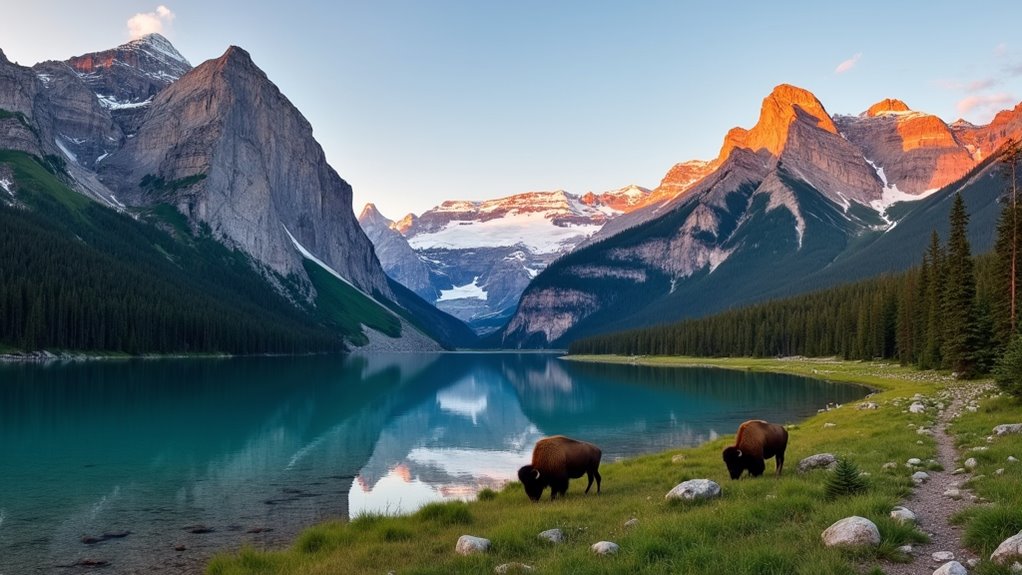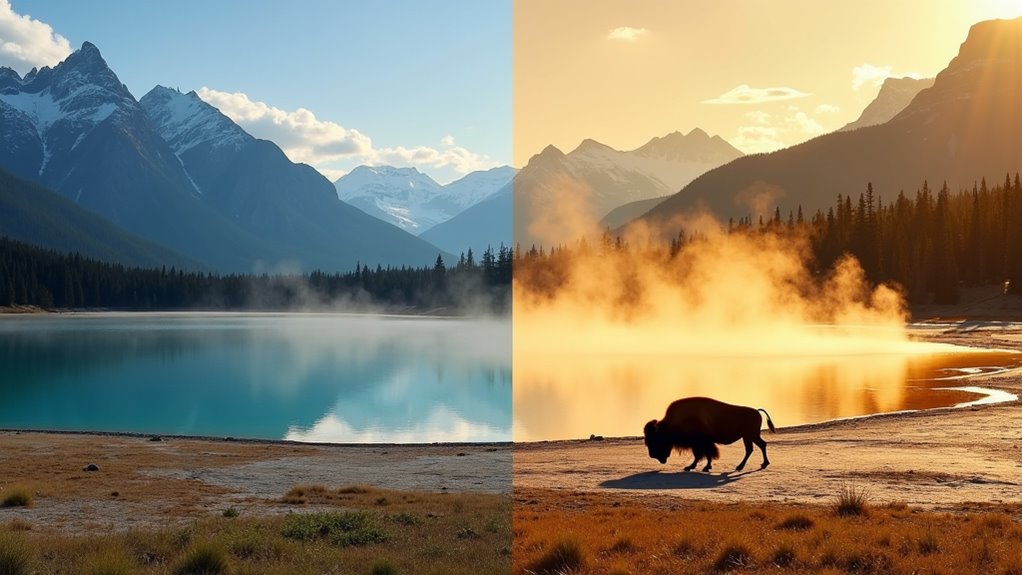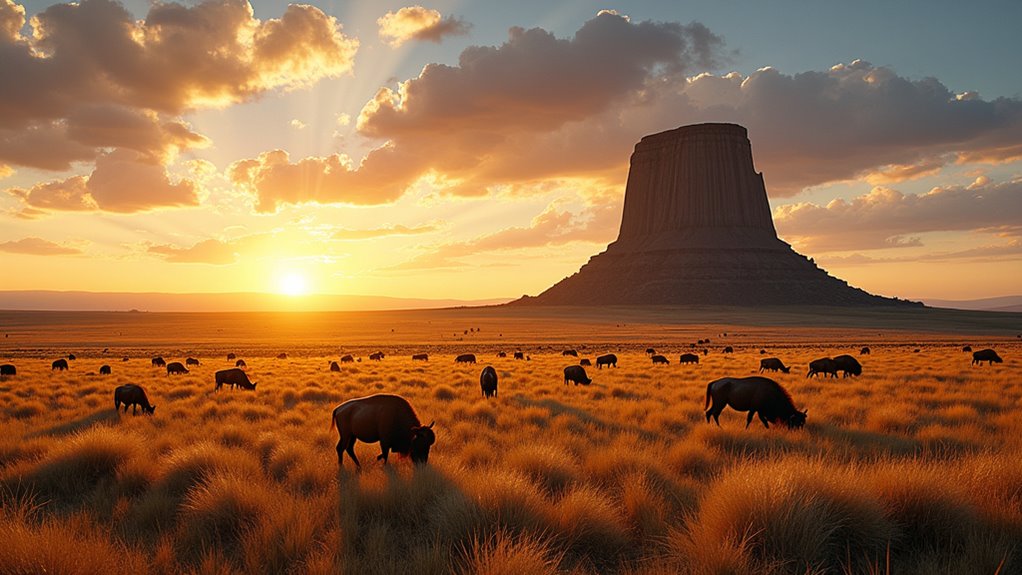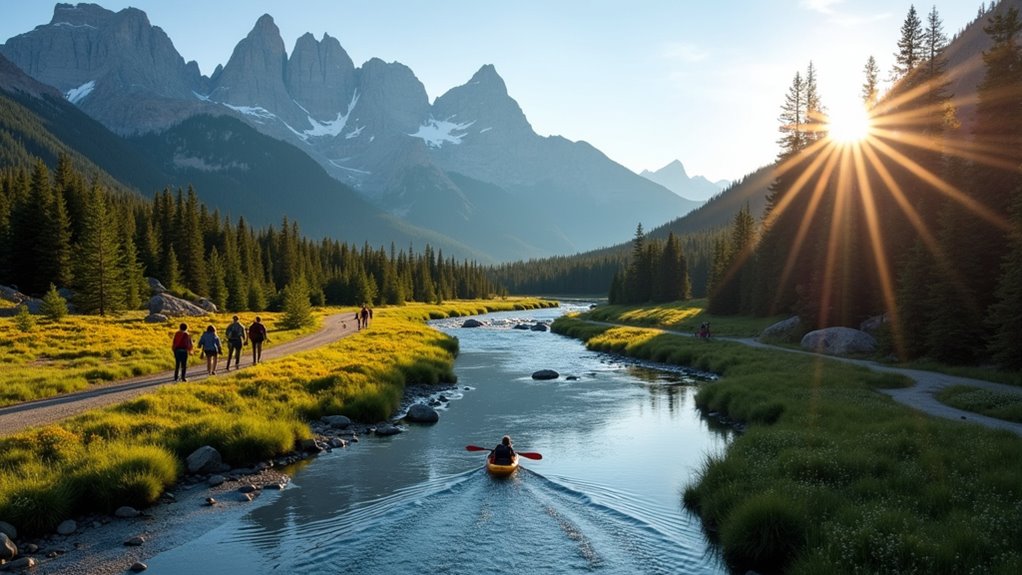Physical Address
304 North Cardinal St.
Dorchester Center, MA 02124
Physical Address
304 North Cardinal St.
Dorchester Center, MA 02124

Wondering whether to witness Yellowstone's geysers or Montana's glacier-carved valleys? Your perfect western adventure awaits.
Did you know that Montana and Wyoming together receive over 10 million visitors annually, yet most travelers choose only one state to explore? When planning your next western adventure, you’ll face the dilemma of choosing between Montana’s glacier-carved landscapes or Wyoming’s geothermal wonders. Both states offer spectacular national parks, authentic western heritage, and outdoor thrills on different budgets. The decision isn’t simply about natural beauty—it’s about matching your travel style with the right wilderness experience.

When comparing Montana and Wyoming’s natural treasures, you’ll find yourself spoiled for choice with world-class parks and stunning landscapes. Montana boasts Glacier National Park, featuring spectacular mountain scenery and the historic Going-to-the-Sun Road. You’ll also discover Flathead Lake, America’s largest western freshwater lake, and the dramatic Beartooth Highway.
Wyoming counters with Yellowstone‘s geothermal wonders and Grand Teton’s jagged peaks. The iconic Devils Tower rises dramatically from the plains, while Jackson Hole serves as a perfect gateway to outdoor adventures. Wildlife enthusiasts shouldn’t miss the National Elk Refuge.
Both states offer unique experiences: Montana’s Big Sky Country lives up to its name with expansive vistas, while Wyoming’s hot springs and geological formations provide fascinating glimpses into the earth’s processes. Along your journey, you’ll have opportunities to sample classic American dishes that reflect the region’s rich food heritage. The optimal time to experience these natural wonders is between June and September, with post-Labor Day visits offering fewer crowds. Either choice guarantees unforgettable natural experiences on any budget.
Tourism serves as a powerful economic engine in both Montana and Wyoming, though the impact varies markedly between these Rocky Mountain neighbors. Montana’s tourism industry contributes a staggering $8.2 billion annually, with visitors spending $5.4 billion in 2024 alone.
Tourism drives Montana and Wyoming economies, with Montana alone seeing $8.2 billion in annual impact.
You’ll find your dollars fueling transportation, restaurants, and lodging—each sector generating over $1 billion.
When you visit gateway towns like West Yellowstone or Gardiner in Montana, you’re directly supporting rural economies that might otherwise struggle. Your vacation creates essential jobs in these communities, from seasonal positions to permanent roles in hospitality and recreation. The tourism industry supported 66,550 jobs statewide in Montana last year.
Though Wyoming’s specific figures aren’t as well documented, both states’ rural communities rely heavily on tourism dollars to fund infrastructure improvements, preserve local culture, and sustain small businesses year-round. Unlike the spring break crowds that flock to Florida’s party cities, visitors to these mountain states typically seek outdoor recreation and natural attractions.

Both Montana and Wyoming boast remarkable historical landmarks that tell fascinating stories of the American West’s complex past. Montana’s Fort Benton and Wyoming’s Fort Laramie showcase pivotal trading posts that shaped frontier development, while both states preserve sacred Native American sites like Pompeys Pillar and Devils Tower. Much like choosing between island destinations, each state offers unique cultural experiences that cater to different traveler preferences.
When exploring these historic treasures, consider:
Traveling through the vast landscapes of Montana and Wyoming requires thoughtful planning, as these massive Western states offer limited public transportation compared to more densely populated regions.
Your best option is driving—it’s the most economical choice at $83-$120 between states and offers unparalleled access to scenic byways.
Flying saves time (about 6 hours versus nearly 23 hours driving) but costs $260-$600.
If you’re budget-conscious, consider the weekly Express Arrow bus service connecting Billings to Cheyenne, though the 10-hour journey requires patience. The approximately 455-mile route makes driving significantly faster than taking the bus.
Remember that only half of Wyoming residents have access to intercity buses, and services primarily follow interstate routes.
During winter, road conditions can complicate travel plans, so always check weather forecasts and have backup options when venturing through these beautiful but remote territories.
While most visitors focus on inland attractions, some coastal areas like Sanibel Island offer excellent snorkeling opportunities for those extending their western adventure to Florida’s shores.

Montana and Wyoming stand as twin titans of outdoor adventure, offering some of America’s most breathtaking landscapes for exploration. Montana edges ahead with its #1 ranking for outdoor activities in 2025, featuring Class II-III rapids on the Yellowstone River and prime wolf-watching in Lamar Valley. Horseback riding at Flying Diamond Ranch is a popular activity in Paradise Valley for Montana vacationers, suitable even for beginners.
Experience America’s wildest frontiers where Montana’s legendary rapids meet Wyoming’s untamed wilderness.
Wyoming counters with the challenging Titcomb Basin trek and Snake River rafting beneath the Tetons. Adventurous travelers might also consider El Yunque rainforest as a tropical alternative to these mountainous states.
For unforgettable experiences in either state:
While sharing similar landscapes and ecosystems, Montana and Wyoming diverge considerably in their approaches to environmental stewardship. Montana shows stronger public support for conservation, with 68% of voters backing such policies and 63% concerned about wildlife habitat loss.
Wyoming’s wildlife management tends to prioritize hunting interests over ecosystem balance, creating controversies around elk, moose, and bighorn sheep populations. Both states benefit from the Montana-Wyoming Plant Materials Center, which has developed native plant restoration techniques since 1959. When traveling through either state, prioritizing safety measures can help you enjoy nature responsibly while reducing environmental impact.
If you’re eco-conscious, you’ll find Montana’s approach more aligned with current environmental science, particularly regarding cold-water fisheries sustainability. Recent concerns have emerged as political agendas increasingly undermine science-based wildlife management across the region. Despite political differences, conservation remains surprisingly bipartisan in both states, with public lands protection transcending party lines.
When planning your visit, consider supporting businesses that emphasize sustainable tourism practices.
Whether you choose Montana’s glacier-carved valleys or Wyoming’s bubbling geysers, you’re in for a treat that won’t break the bank. Both states offer affordable camping, free hiking trails, and authentic small-town experiences where your tourism dollars directly support local communities. Pack light, drive slow, and learn about America’s natural cathedral. Your perfect western adventure awaits in either destination—the mountains are calling, and you must go.